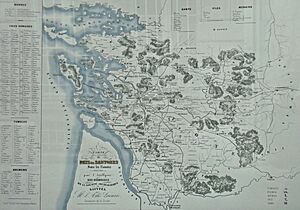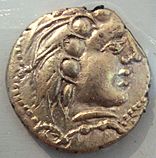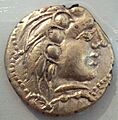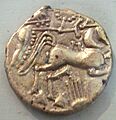Santoni (tribe) facts for kids

The Santones were an ancient Gallic tribe. They lived in a region that is now called Saintonge in France. They were around during the Iron Age and when the Romans ruled.
Contents
What's in a Name?
The name "Santones" comes from this ancient tribe. You can still see their name in places today!
- The city of Saintes was once called Mediolanum Santonum. This means "the central town of the Santones."
- The region of Saintonge also gets its name from them.
Where Did the Santones Live?
The Santones lived in what is now western France. Their land was north of the Garonne river's mouth. This area is known as the Saintonge region today.
Their main city during Roman times was Mediolanum Santonum. This city is now called Saintes.
A Look at Santones History
The Santones played a part in the history of ancient Gaul.
Early Interactions with Rome
Around 58 BCE, a group called the Helvetii tried to move into the Santones' land. The Santones, along with another tribe called the Pictones, stopped them.
At first, the Santones worked with Julius Caesar's Roman navy. They even traded goods with the Romans.
Joining the Fight Against Rome
However, Caesar's plans to conquer all the Gallic tribes caused problems. The Santones became divided. Many of them decided to join other Gallic tribes against Rome.
In 52 BCE, the Santones sent 12,000 warriors to help the Gallic army. They fought against the Romans at the Battle of Alesia. This was a very important battle in the Gallic Wars.
Images for kids
See also
 In Spanish: Sántonos para niños
In Spanish: Sántonos para niños





